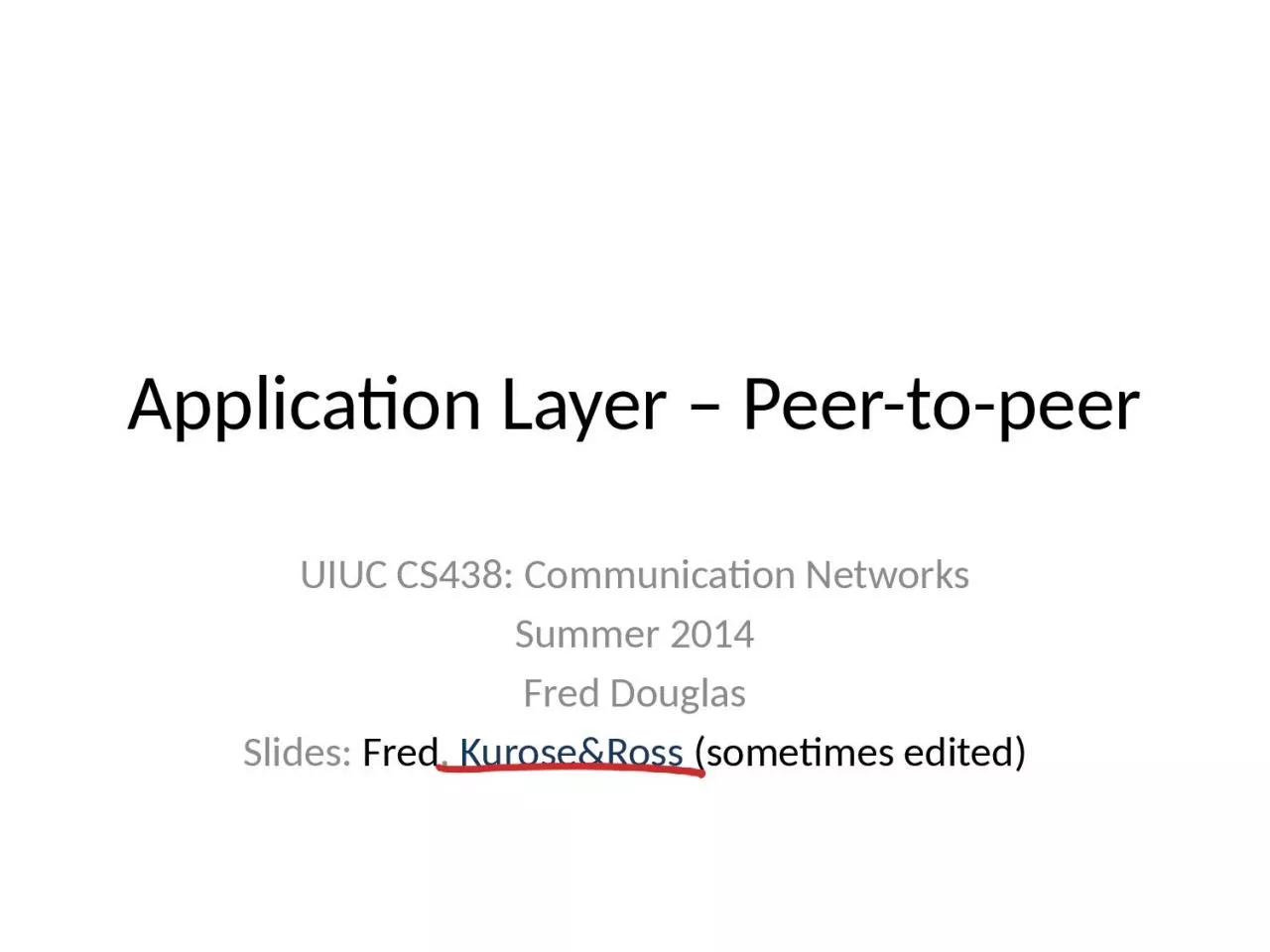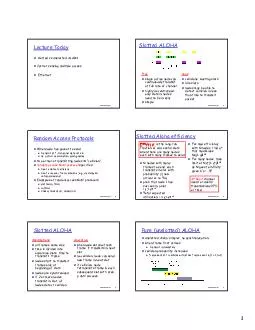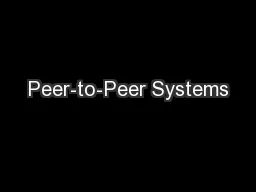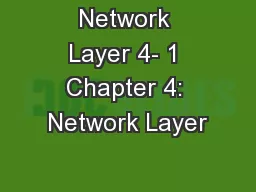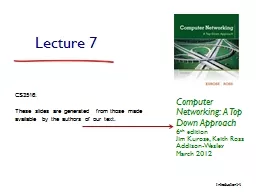PPT-Application Layer – Peer-to-peer
Author : norah | Published Date : 2022-06-11
UIUC CS438 Communication Networks Summer 2014 Fred Douglas Slides Fred KuroseampRoss sometimes edited A Step Back Today everything is megacorps Google etc
Presentation Embed Code
Download Presentation
Download Presentation The PPT/PDF document "Application Layer – Peer-to-peer" is the property of its rightful owner. Permission is granted to download and print the materials on this website for personal, non-commercial use only, and to display it on your personal computer provided you do not modify the materials and that you retain all copyright notices contained in the materials. By downloading content from our website, you accept the terms of this agreement.
Application Layer – Peer-to-peer: Transcript
Download Rules Of Document
"Application Layer – Peer-to-peer"The content belongs to its owner. You may download and print it for personal use, without modification, and keep all copyright notices. By downloading, you agree to these terms.
Related Documents

